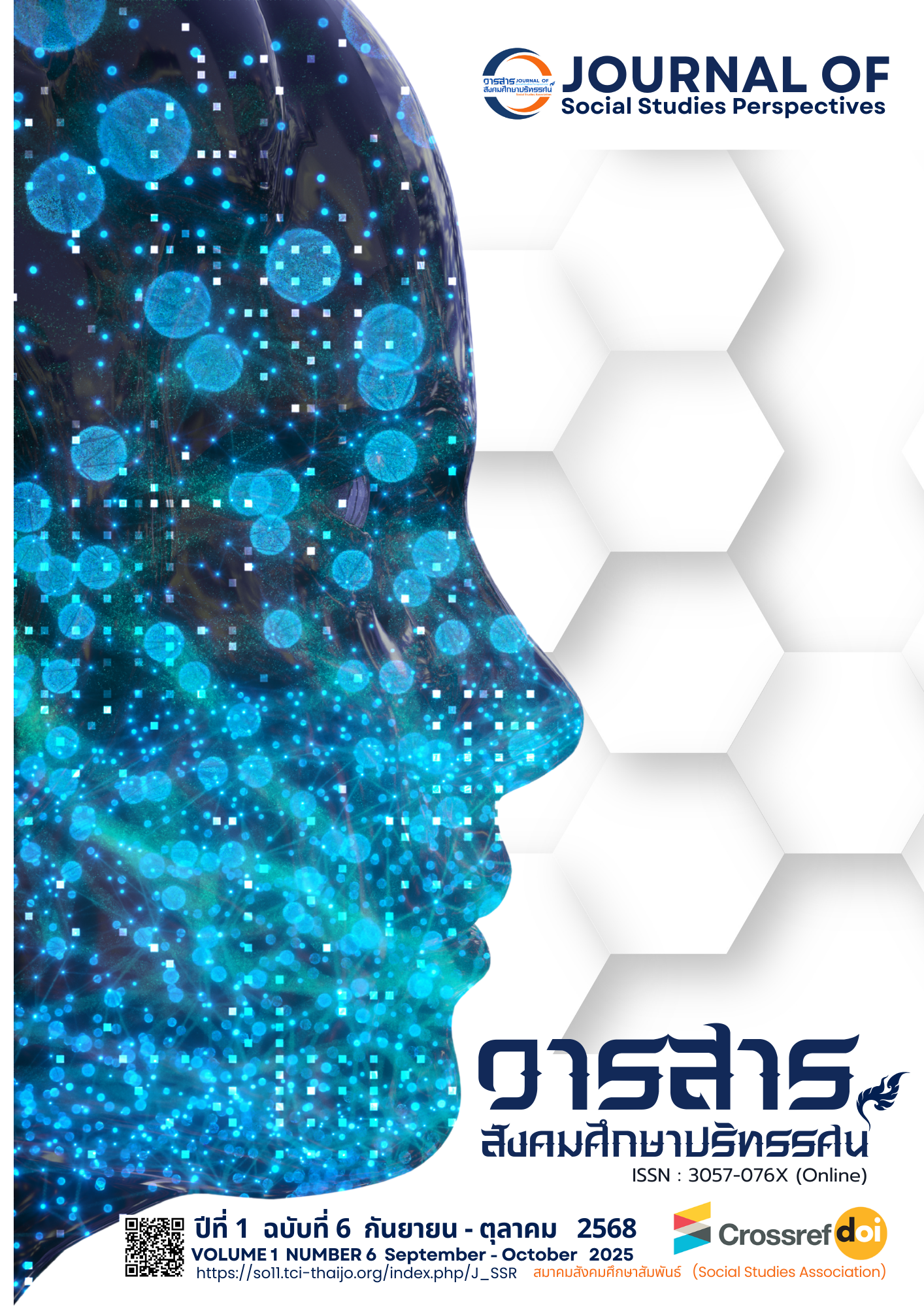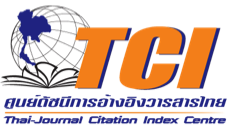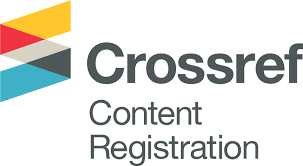EARTH SCIENCE LEARNING MANAGEMENT USING THE MODELING PROCESS
DOI:
https://doi.org/10.64186/jsp2495Keywords:
Model, The modeling process, Earth science learning managementAbstract
This academic article explores the use of modeling in Earth Science instruction. The benefits of modeling in Earth Science instruction include helping students gain knowledge and understanding of Earth Science content, developing scientific process skills, enhancing scientific thinking abilities, and evaluating information and verifying the quality of information sources. Additionally, modeling can help students stay safe from hazardous natural phenomena. However, challenges in using models and modeling in Earth Science instruction include students’ and teachers’ misconceptions about models and a lack of sufficient skills and knowledge for effective modeling. To address these misconceptions, Earth Science teachers should be encouraged to organize instruction using physical models as comparative models and to use information-based conceptual representations to provide visualizations that enhance students’ understanding of Earth Science topics. Furthermore, to overcome the lack of sufficient skills and knowledge, both teachers and students should understand the concept of modeling and be able to construct models using a four-step modeling process in Earth Science instruction: 1) model construction, 2) model application, 3) model testing and evaluation, and 4) model revision and improvement. Implementing these steps can effectively address the challenges of modeling in Earth Science instruction.
References
Böschl, F., Forbes, C., & Lange-Schubert, K. (2022). Investigating scientific modeling practices in U.S. and German elementary science classrooms: A comparative, cross-national video study. Science Education, 107(2), 368–400. https://doi.org/10.1002/sce.21780
Bryce, C. M., Baliga, V. B., De Nesnera, K. L., Fiack, D., Goetz, K., Wade, C. L., Yovovich, V., Baumgart, S., Bard, D. G., Ash, D., Parker, I. M., & Gilbert, G. S. (2016). Exploring models in the biology classroom. The American Biology Teacher, 78(1), 35–42. https://doi.org/10.1525/abt.2016.78.1.35
Charoen, W., & Sangsuwan, A. (2023). Development of scientific modeling on factors affecting rate of a chemical reaction using inquiry-based learning combined with created animations. Journal of Science, Technology, and Energy Lampang Rajabhat University, 14(1), 26–42.
Cheng, M. F., Lin, J. L., Lin, S. Y., & Cheng, C. H. (2017). Scaffolding middle school and high school students’ modeling processes. Journal of Baltic Science Education, 16(2), 207–217. https://doi.org/10.33225/jbse/17.16.207
Clement, J. (2008). The role of explanatory models in teaching for conceptual change. In S. Vosniadou (Ed.), International handbook of research on conceptual change (pp. 417–452). Routledge.
Deus, H. M., Bolacha, E., Vasconcelos, C., & Fonseca, P. E. (2011). Analogue modelling to understand geological phenomena. In Proceedings of the GeoSciEd VI. University of Witwatersrand.
Edwards, A. (2017). The effectiveness of model-based instruction on student achievement and student metacognition in advanced chemistry classes [Doctoral dissertation, Kennesaw State University]. Kennesaw State University Digital Commons. https://digitalcommons.kennesaw.edu/seceddoc_etd/11
Espinet, M., Izquierdo, M., Bonil, J., & Ramos-de Robles, S. L. (2012). The role of language in modeling the natural world: Perspectives in science education. In B. J. Fraser et al. (Eds.), Second international handbook of science education (pp. 1385–1403). Springer. https://doi.org/10.1007/978-1-4020-9041-7_89
Gilbert, J. K. (2004). Models and modelling: Routes to more authentic science education. International Journal of Science and Mathematics Education, 2(1), 115–130.
Gilbert, J. K., & Justi, R. (2016). Modelling-based teaching and learning: Current challenges and novel perspectives. In J. K. Gilbert & R. Justi (Eds.), Modelling-based teaching in science education (pp. 253–262). Springer.
Gobert, J. D., & Buckley, B. C. (2000). Introduction to model-based teaching and learning in science education. International Journal of Science Education, 22(9), 891–894.
Göhner, M. F., Bielik, T., & Krell, M. (2022). Investigating the dimensions of modeling competence among preservice science teachers: Meta-modeling knowledge, modeling practice, and modeling product. Journal of Research in Science Teaching, 59(8), 1354–1387. https://doi.org/10.1002/tea.21613
Halloun, I. (1998). Schematic concepts for schematic models of the real world: The Newtonian concept of force. Science Education, 82(2), 239–263.
Halloun, I. A. (2011). From modeling schemata to the profiling schema: Modeling across the curricula for profile shaping education. In J. Gilbert, M. Bulte, & L. S. Van Driel (Eds.), Models and modeling: Cognitive tools for scientific enquiry (pp. 77–96). Springer.
Hallström, J., Norström, P., & Schönborn, K. J. (2023). Authentic STEM education through modelling: An international Delphi study. International Journal of STEM Education, 10, 62. https://doi.org/10.1186/s40594-023-00433-6
Harrison, A. G., & Treagust, D. F. (1998). Modelling in science lessons: Are there better ways to learn with models? School Science and Mathematics, 98(8), 420–429.
Harrison, A. G., & Treagust, D. F. (2000). A typology of school science models. International Journal of Science Education, 22(9), 1011–1026.
Hestenes, D. (1997). Modeling methodology for physics teachers. In AIP Conference Proceedings (pp. 935–958). American Institute of Physics.
Ifqiren, S., Bouzit, S., Kouchou, I., & Selmaoui, S. (2023). Modelling in the scientific approach to teaching life and earth sciences: Views and practices of Moroccan teachers. Journal of Education and e-Learning Research, 10(4), 605–615.
Intho, W. (2016). Model based learning in earth science, astronomy, and space science. https://earthscience.ipst.ac.th/wp-content/uploads/sites/19/2016/09/การจัดการเรียนรู้โดยใช้แบบจำลองเป็นฐาน.pdf
Justi, R. (2009). Learning how to model in science classroom: Key teacher's role in supporting the development of students’ modelling skills. Educación Química, 20(1), 32–40.
Justi, R., & Gilbert, J. K. (2002). Modelling, teachers’ views on the nature of modelling, implications for the education of modellers. International Journal of Science Education, 24(4), 369–387.
Lisle, R. J. (2006). Google Earth: A new geological resource. Geology Today, 22(1), 29–32.
Parmboon, W., Sittisomboon, M., & Onthanee, A. (2023). Development of learning activities by using model-based learning on the topic of immune system to enhance systems thinking ability for eleventh grade students. Mahachula Academic Journal, 10(7), 64–77.
Pathomchaiwal, S. (2020). A study of upper secondary earth science teachers’ pedagogical content knowledge in Bangkok metropolitan [Master’s thesis, Chulalongkorn University]. Chulalongkorn University Intellectual Repository. http://cuir.car.chula.ac.th/handle/123456789/76710
Praisri, A., Faikhamta, C., Tanak, A., Pongsophon, P., & Jantarakantee, E. (2022). Modeling practice and use in science classroom. Journal of Education Naresuan University, 24(1), 349–358.
Praisri, A., Panich, C., & Faikhamta, C. (2023). Model-based learning in physics. IPST Magazine, 51(244), 26–32.
Schwarz, C. V., Reiser, B. J., Davis, E. A., Kenyon, L., Achér, A., Fortus, D., Shwartz, Y., Hug, B., & Krajcik, J. (2009). Developing a learning progression for scientific modeling: Making scientific modeling accessible and meaningful for learners. Journal of Research in Science Teaching, 46(6), 632–654.
Sell, K. S., Herbert, B. E., Stuessy, C. L., & Schielack, J. (2006). Supporting student conceptual model development of complex Earth systems through the use of multiple representations and inquiry. Journal of Geoscience Education, 54(3), 396–407.
Valanides, N., & Angeli, C. (2011). Teaching pre-service elementary teachers to teach science with computer models. In J. Gilbert, M. Bulte, & L. S. Van Driel (Eds.), Models and modeling: Cognitive tools for scientific enquiry (pp. 263–279). Springer.
Williams, G., & Clement, J. (2015). Identifying multiple levels of discussion-based teaching strategies for constructing scientific models. International Journal of Science Education, 37(1), 82–107.
Downloads
Published
How to Cite
Issue
Section
Categories
License
Copyright (c) 2025 Journal of social studies perspectives

This work is licensed under a Creative Commons Attribution-NonCommercial-NoDerivatives 4.0 International License.
The article is published under the Creative Commons Attribution-NonCommercial-NoDerivatives 4.0 International (CC BY-NC-ND 4.0) license, which allows others to share the article while giving appropriate credit to the author. It prohibits the use of the article for commercial purposes or the creation of derivative works. Any other reuse or reproduction requires permission from the journal.










